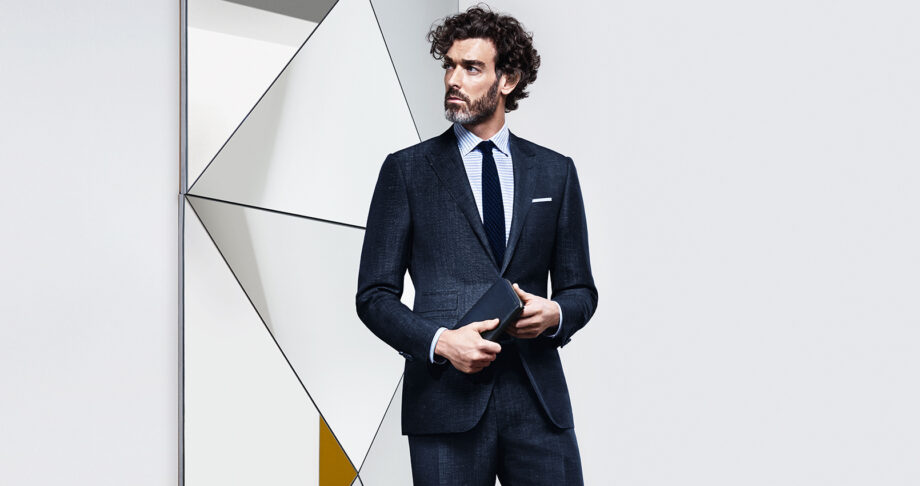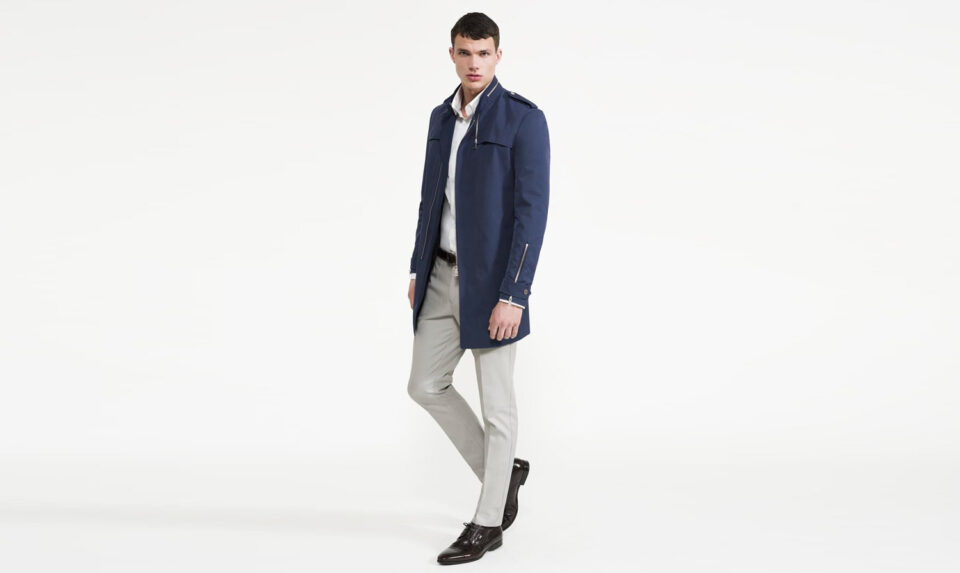Knowing how to dress for a job interview is the final hurdle. You’ve already survived CV scrutiny and moved on to impress the HR panel – via a conference call – with your industry knowledge and conversational charm. Now, management wants to meet you in person. And that involves a thorough assessment of whether you look as good as you talk.
Putting your best foot forward, the rise of business casual and tips on being office-cool are shifting work dress-codes from black-and-white simplicity to a blurry grey-zone. First off, interviews aren’t the stomping ground for avant-garde office style. Wisdom comes in adhering to office tradition and being on style-par (not below or above) with your potential boss.
But, we don’t recommend prehistoric dress codes be thy shining light either. Need to know how to dress for a job interview? Below are some tried and tested job interview looks to keep you in check, and ultimately, get that job.
In This Story…
The Banker Or Corporate Job Interview
Suits
The sharp-looking suit not only looks sophisticated, it’s the most flattering thing a man can own. We recommend a made-to-measure suit for a superior fit and finish, but if you’re strapped for time (and cash), look to an off-the-rack suit and use the following points as a checklist:
- Type – opt for a single-breasted, two-button jacket with a notch lapel and flat front trouser. Size-wise, the jacket should cut the shoulder nicely, and the sleeves should finish where the base of the thumb meets the wrist. The top jacket button should be aligned above your naval and the jacket base cutting across your butt.
- Colour – stick to navy or grey (light or charcoal). Black is traditional but could be too stuffy for a contemporary office (you want stand out, right?)
- Fabric – look to suits crafted from wool or wool-cotton blends. These are natural, matte-finished and breath well to avoid nervous sweats and tacky polyester-sheen.
Styling
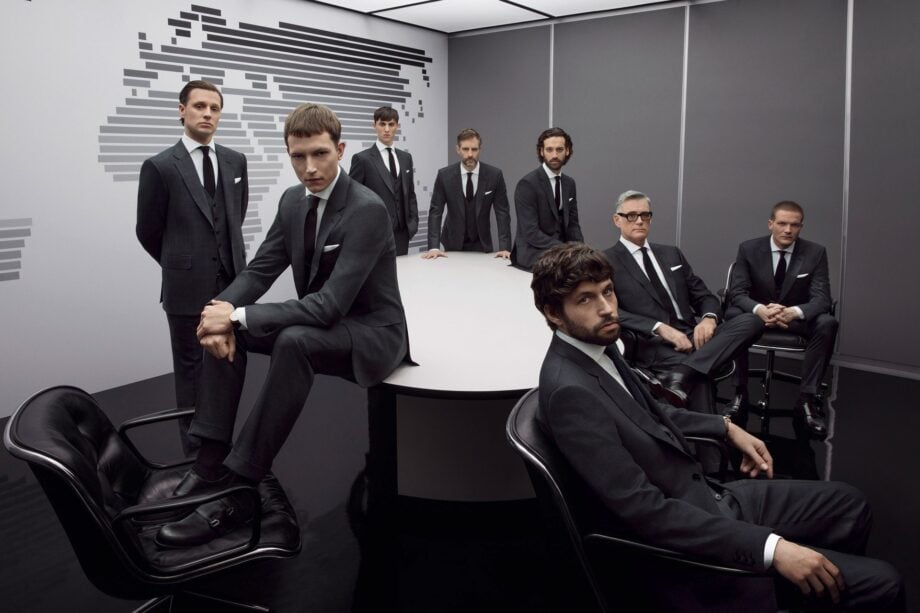
- Shirt – a crisp, white button-down shirt in slim-fit design with a sharp cutaway collar is a solid choice. Light pink and blue are coloured options and a double cuff shirt with silver cuff links will add some panache to a cotton shirt.
- Tie – a neutral coloured is the safest. Opt for a knit or woven tie if you’re going tonal (a darker shade of the suit colour), and wanting a textural finish to a coloured tie. classic business stripes and checks are stylish tie patterns, keeping the colours plain.
- Pocket square – a straight fold, rolled white pocket square for the classic or knitted and muted-coloured one for something a bit more contemporary.
- Shoes – black leather Oxford or dark brown Derby shoes (classic and polished). A pair of double-monk strap shoes in brown or tan are a fresh take on the lace-up.
RELATED: The Best Shirt Brands For Men
The Creative Or Startup Job Interview
Casual Suit or Separates
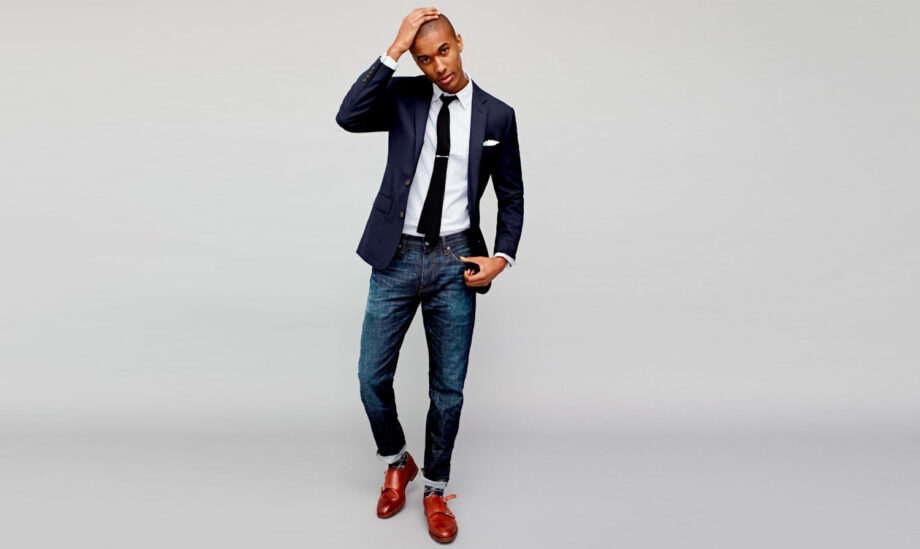
A two-piece suit can look out of character in certain interview settings, particularly in more creative industries. However, suit separates – and the interchanging of jacket and pants – let’s you impress – without stifling your creative style. Here are some ideas:
- Be creative with colours, prints and textures opting for colour-blocked separates. Stick to muted tones – olive, navy, maroon, mustard (nothing primary coloured) and keep one of the separates as the anchor colour (usually the darkest or mildest colour).
- Play around with high and low pieces. If the jacket is a structured peak lapel blazer in straw yellow tweed, team it with cotton chinos in an all-over grey or khaki. A less structured jacket (on the shoulder) – and made from more drapey fabric with a slim-lapel and fit, receive a formal injection with wool pleated trousers and relaxed leg.
- Cropped trousers with lift the style edge of your pants too (just don’t go higher than one-two inches).
- Shirts can vary: a plain cotton button-down (the collar being less formal); a gingham check or butcher stripe shirt, denim chambray with mandarin collar (a subtle way of injecting texture while sticking to business blue); or a muted floral (darker colours and nothing floral).
- Ties can be left behind, replaced by a snug, fine-gauge sweater in a block colour, layered peacefully under the jacket. When wearing a tie it should be fun but tasteful in colour in print, and always darker than your shirt.
- Accessories are a must with separates: a vibrant pocket square, woven leather belt and polished loafers (instead of business lace-ups) adding a personalised touch.
Advertising Or Media Job Interview
For a sartorial statement that doesn’t compromise quality for ‘fashion’, relaxed suiting – in colour and/or fit – and smart casual pieces are the perfect option for media/arts interviews. An important tip on how to dress for a job interview, research the office dress code expectations before assuming all non-corporate agencies are lax on tradition.
Relevant ‘Creative’ Jobs
- Graphic designer
- Account Manager (Ad Agency)
- Creative Director
A Creative ‘Suit’
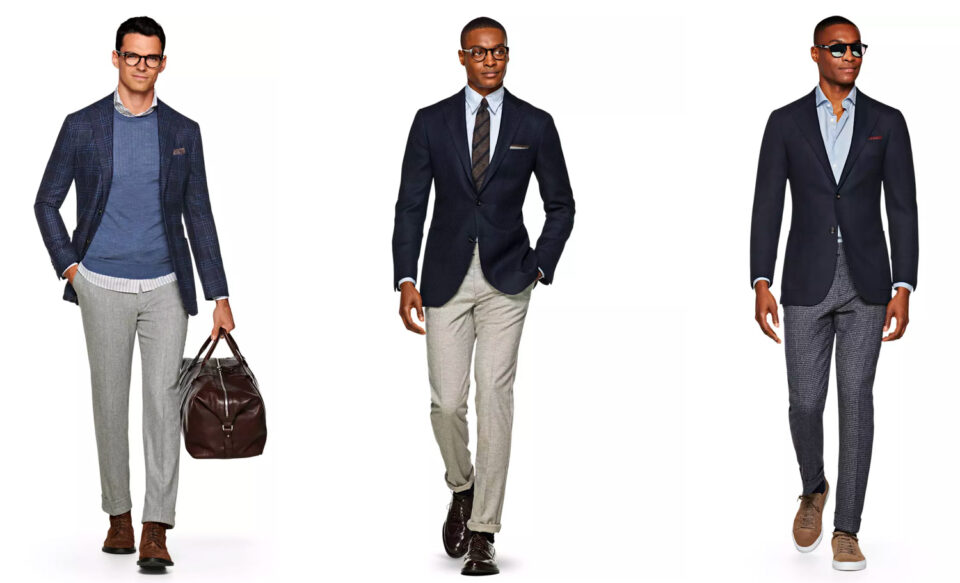
- A suit or separates in an offbeat colour (think green, maroon or sand – nothing bright), injects energy into your interview and makes a lasting impression.
- Play with deconstructed blazers in cotton or wool or even active fabric blend for a sports-inspired finish. More informal still? Replace the jacket with a bomber, still cut sharp, but far less stuffy.
Styling
- Mix and match a statement blazer with smart denim jeans and add a plain shirt to tone the look down.
- Pattern shirts inject even more panache to a coloured suit. Consider geo-prints, madras checks or soft florals shirt – sans tie. Then, add a pocket square with an on scale print to match the shirt.
- Crepe soles are a down-played take on the business shoe. Or, for the extremely low key office environment, a low-cut white leather sneaker will put some kick in your statement tailoring.
What if none of the jobs apply to you?
- A pair of black dress shoes, trousers and a clean, crisp white shirt will suffice.
- No tie is necessary if you are not wearing a jacket.
- If you wish to wear a jacket, then a suit jacket or bomber jacket will be okay.
Final Tips & Tricks
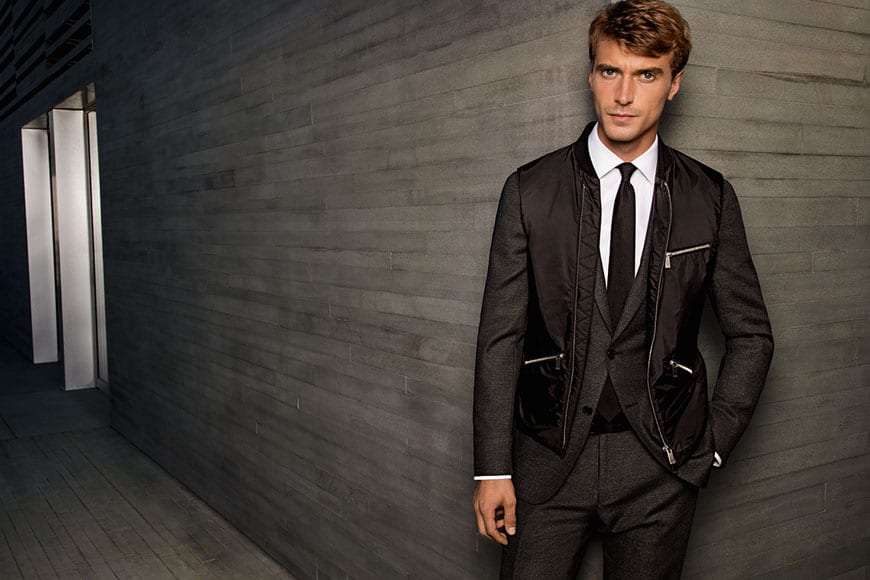
- Check out the company culture: when first deciding what to wear for a job interview research the dress code and determine if it’s corporate, semi-formal or smart casual.
- Match the man: your outfit should match or be slightly dressier than the dress code of the company, and thus, the interviewer.
- Present your best: ensure your nice-fitting clothes are clean and ironed. Shoes polished, breath fresh and hair and facial hair neatly groomed.
- Avoid brash and brazen: unless your interviewing for the circus, avoid loud prints and uncouth colourways, sticking to muted prints and colours, or simply neutrals – just to be safe.
- Accessorise intelligently: with a textured tie, silk pocket square or pebble-grain briefcase, you can inject a bit of personality into your outfit. Again, keep the patterns neat and colours dark if in doubt. You’ll have plenty of time to play around with office style, once you’ve landed the job. Good things come to those who wait.
Some things will never be acceptable in a job interview…
- A Hawaiian shirt or floral shirt… draw attention for the right reasons
- Flip flops or thongs on your feet
- Dirty or scuffed shoes.
- A black shirt with a white tie
- A novelty tie or any sort. Keep your tie plain.
- Polyester fabrics – they’re highly flammable and nasty. You’re better than that.
